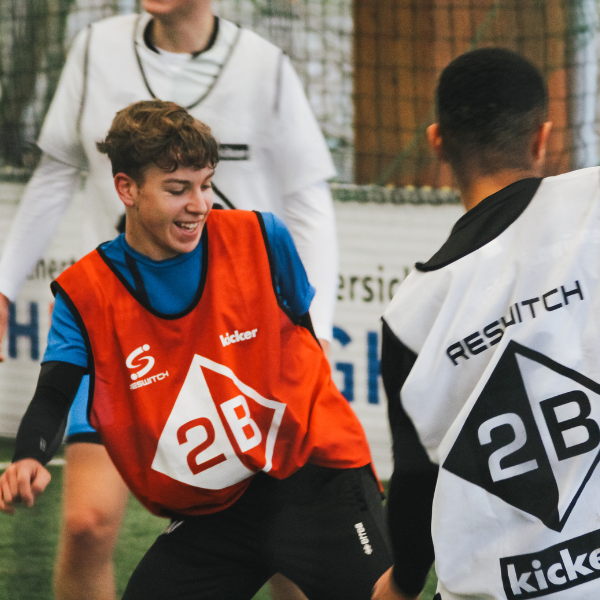Training exercises or training games?
Exercises and game forms in football training: differences and derivations
Abstract
In football training, exercises and games play a central role in the development of players. While exercises aim to train certain skills and abilities in isolation, games serve to train the interaction of players and the application of the skills learned in game-like situations. This article explains the differences between exercises and games and their various derivatives.
1. Introduction
The goal of football training is to improve players in all relevant areas to prepare them for the challenges of the game. This includes technical skills, tactical knowledge, athletic abilities and mental strength. To achieve these goals, coaches use a variety of exercises and game formats.
2. Exercise forms
Practice forms are training forms in which players train certain skills and abilities in isolation. They are characterized by the following features:
- Low complexity: Exercises are usually relatively simple and focus on a specific aspect of the game, such as ball control, passing or shooting.
- Controlled environment: The exercises take place in a controlled environment in which the coaches can control the game situations and the movements of the players.
- High level of repetition: Players repeat the exercises several times to optimize motor learning processes.
3. Forms of play
Game forms are training forms in which players practice interaction and the application of the skills they have learned in game-like situations. They are characterized by the following features:
- High complexity: Game forms are more complex than exercise forms and reflect the dynamics of the game.
- Less control: The game situations in game forms are less controlled than in practice forms, and players have to make decisions independently and deal with the actions of their teammates.
- Lower level of repetition: In game formats, exercises are repeated less frequently because players are constantly confronted with new situations.
4. Derivatives of exercise and game forms
Various derivatives can be developed from the basic forms of exercise and game, which can be adapted to the specific needs of the players and the objectives of the training. The most important derivatives include:
- Station operation: In station operation, the players go through various stations where different exercises or game forms are offered.
- Small games: Small games are short games with a reduced number of players on a smaller playing field.
- Positional games: Positional games focus on the specific tasks and movements of a particular position, e.g. defender or striker.
- Team games: Team games take place under regular playing conditions and serve as preparation for competitive games.
RESWITCH adds an additional level of complexity to both exercise and game forms. Players are constantly required to perceive situations precisely and make decisions.

However, especially in children’s and youth football, game forms should be preferred.
Forms of play in children’s and youth football: advantages over practice forms
Game forms are preferable to practice forms in children's and youth football for several reasons.
1. Greater fun factor and motivation
Children and young people learn best through play and fun. Games offer them the opportunity to live out their love of football and at the same time improve their skills and abilities. In practice, however, the focus can be too much on repetition and correction, which can quickly reduce the fun of the game.
2. Promoting game intelligence and decision making
In game forms, children and young people have to make decisions independently and deal with the actions of their fellow players. This promotes their game intelligence and their ability to make the right decision in pressure situations. Practice forms, on the other hand, often offer less scope for independent action, so that players have fewer opportunities to develop these skills.
3. Improvement of motor learning processes
Motor learning processes are promoted much better through play situations and the associated sense of achievement than through pure repetition of exercises. In play forms, children and young people experience the immediate consequences of their actions and can thus learn faster and improve their motor skills.
4. Preparation for the "real" game
Game forms are designed to be as realistic as possible and reflect the dynamics of the game. They prepare children and young people ideally for the challenges of the "real" game. Practice forms, on the other hand, are often artificial and unrealistic, so that players can have difficulty applying their skills in competition.
5. Conclusion
Exercises and games are indispensable components of football training. By correctly selecting and applying these training methods, coaches can improve players in all relevant areas and prepare them for the challenges of the game. The proportion of games should be significantly higher, especially in children's and youth training.




